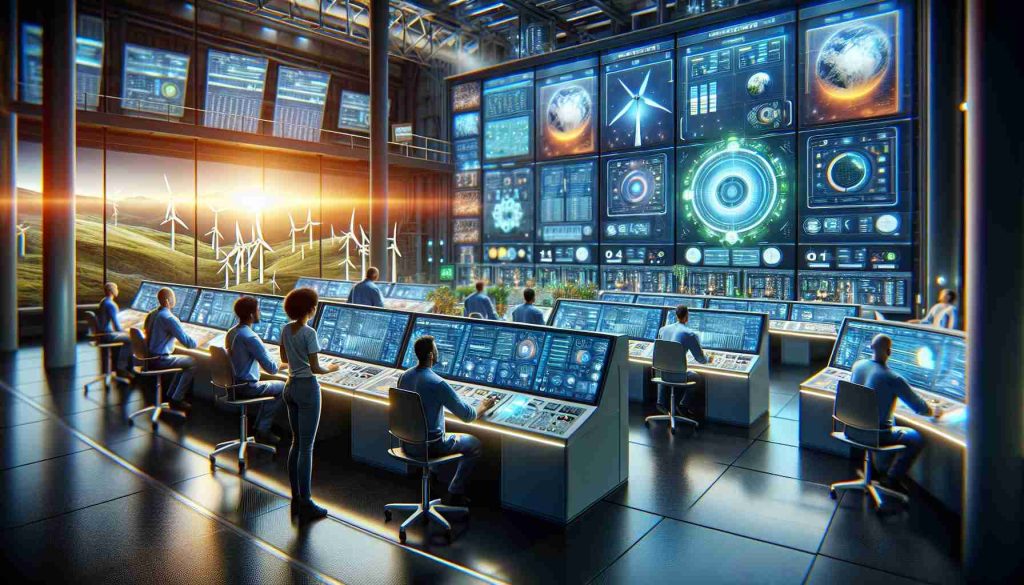A groundbreaking technological advancement is set to transform the energy sector, heralding a new era in sustainable power generation.
In a recent development, a state-of-the-art innovation has been unveiled, promising to revolutionize the way electricity is produced and distributed. This transformative technology represents a significant leap forward in the quest for cleaner and more efficient energy sources.
Breaking away from conventional practices, this innovation taps into renewable energy to meet the growing demand for electricity. By harnessing the power of nature, this cutting-edge solution not only reduces our dependence on fossil fuels but also minimizes harm to the environment. With a focus on sustainability, this revolutionary approach aligns with global efforts to combat climate change and build a greener future.
The implications of this breakthrough are far-reaching, offering a glimpse into a future where clean, renewable energy is the norm. As countries worldwide strive to meet ambitious renewable energy targets, this technological marvel paves the way for a more sustainable and eco-friendly energy landscape. Embracing this innovation could usher in a new era of energy generation that is both efficient and environmentally conscious.
As we stand on the cusp of a renewable energy revolution, this technological breakthrough holds immense promise for a cleaner and more sustainable future. By embracing innovation and harnessing the power of nature, we have the opportunity to reshape the energy industry and pave the way for a brighter tomorrow.
Revolutionizing the Energy Industry: Unveiling New Frontiers in Sustainable Power Generation
A groundbreaking technological advancement is poised to redefine the energy sector, ushering in a transformative era of sustainable power generation. As we delve deeper into this revolutionary landscape, several key questions arise, shedding light on the intricacies and implications of this cutting-edge technology.
What are the most important questions surrounding this technological innovation?
– How does this new technology specifically harness renewable energy sources to generate electricity?
– What distinguishes this innovation from existing energy production methods?
– What impact does this advancement have on addressing climate change and promoting environmental sustainability?
– How scalable is this technology and what challenges may arise during widespread implementation?
Key Challenges and Controversies:
While the promise of revolutionizing the energy industry with cutting-edge technology is enticing, several challenges and controversies loom on the horizon:
– Adoption Barriers: Integrating new technologies into existing energy infrastructure can be complex and costly, posing challenges in widespread adoption.
– Grid Stability: Fluctuations in renewable energy sources may present grid stability concerns, necessitating advanced solutions for balancing supply and demand.
– Policy and Regulation: Evolving regulatory frameworks and policies are essential to support the integration of innovative energy technologies and ensure fair market competition.
Advantages and Disadvantages:
– Advantages:
– Reduced Carbon Footprint: By leveraging renewable energy sources, this innovation contributes to lowering greenhouse gas emissions and combating climate change.
– Energy Security: Diversification of energy sources through the adoption of cutting-edge technology enhances energy security and reduces reliance on fossil fuels.
– Disadvantages:
– Initial Investment: The initial capital outlay for implementing new technologies can be substantial, potentially deterring widespread adoption.
– Technological Dependency: Relying heavily on advanced technology may introduce vulnerabilities to energy systems, necessitating robust cybersecurity measures.
As we navigate through the complexities of revolutionizing the energy industry, it becomes evident that this technological leap holds immense promise for reshaping the future energy landscape. Embracing innovation while acknowledging and addressing the associated challenges is crucial in realizing a cleaner, more sustainable future for generations to come.
If you want to explore more insights and updates on energy industry transformations, visit U.S. Department of Energy for valuable resources and reports.










More Stories
Game-Changer in Delivery! Glovo’s Bold Move Stuns Spain!
Maximizing Returns Beyond Treasury Bonds
Exploring the Rising Trends in European Banking